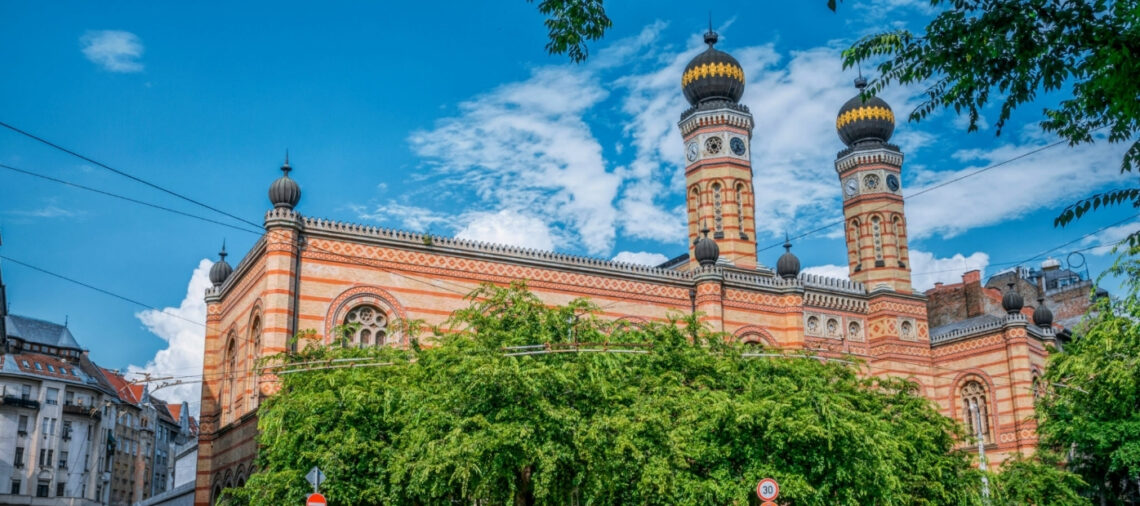Prepare to be transported into a world of captivating history, vibrant art, and an unforgettable cultural experience. Budapest’s Jewish Quarter is a treasure trove of synagogues, street art, ruin bars, and a rich heritage that will leave you in awe.
From the moment you step foot in this dynamic neighborhood, you’ll be immersed in a tapestry of centuries-old Jewish culture. But that’s just the beginning.
So, get ready to embark on a journey that will open your eyes to the fascinating stories behind the walls, the colorful expressions on the streets, and the vibrant community that continues to thrive in Hungary’s capital.
Budapest’s Jewish Quarter – A Short History
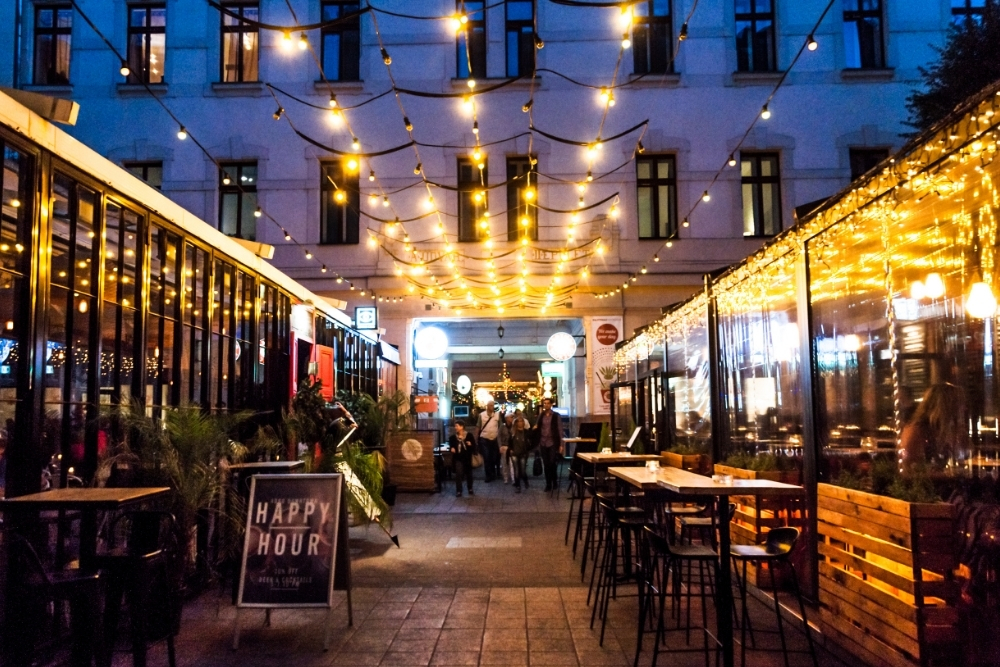
The Jewish Quarter in Budapest has a rich and complex history, reflecting Hungary’s broader narrative of Jewish life. Before delving into its more recent history, it’s important to note that Jews have been a part of Hungarian society for centuries, with their presence in the region dating back to at least the 12th century.
In the 19th century, particularly after the Austro-Hungarian Compromise of 1867, the Jewish community in Hungary experienced significant growth and integration into society. By 1910, nearly a quarter of the Jewish population in Hungary lived in Budapest, indicating the city’s importance as a center of Jewish life. The Jews in Budapest were heavily involved in commerce, the arts, and various professions, contributing significantly to the city’s cultural and economic vibrancy.
The Jewish Quarter, situated in the 7th District (Erzsébetváros), became an important hub for the Jewish community, housing many synagogues and Jewish institutions. Notably, the Dohány Street Synagogue in the Jewish Quarter is the largest synagogue in Europe and a symbol of the community’s presence and influence in the city.
However, the community faced dire challenges during World War II, particularly with the establishment of the Budapest Ghetto in 1944 by the fascist Arrow Cross Party. This ghetto, comprising several blocks of the old Jewish Quarter, included major synagogues like the Dohány Street and Kazinczy Street Synagogues. Over 70,000 Jews were forcibly moved into this small area, enduring horrendous living conditions and the constant threat of deportation to concentration camps.
Thanks to the efforts of diplomats like Raoul Wallenberg and Carl Lutz, and the courage of locals like Károly Szabó, many lives were saved. Wallenberg, in particular, issued protective passports and set up safe houses, significantly aiding in the protection of Jews from deportation and death.
The Soviet Army eventually liberated the ghetto in January 1945, ending this dark chapter. However, the scars of this period remain a poignant part of the Jewish Quarter’s history. Today, the area stands as a testament to both the resilience of the Jewish community and the tragic consequences of intolerance and hatred.
Street Art: Discover the Colorful Expressions
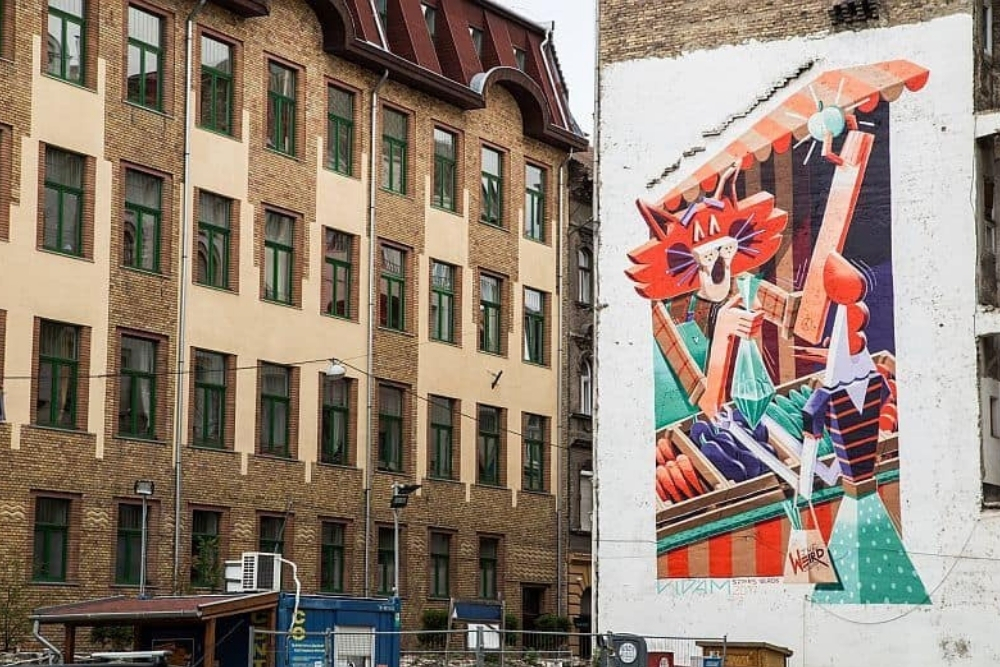
As you stroll through the neighborhood’s narrow alleyways, you’ll be greeted by an explosion of vibrant colors and intricate designs adorning the walls.
The Jewish Quarter has become a haven for local artists to express themselves and showcase their creativity. Graffiti, once considered an act of rebellion, has now evolved into a respected form of expression in Budapest.
The street art in this area tells stories of the past, present, and future, reflecting the diverse cultural influences that have shaped the city.
From political statements to whimsical illustrations, each piece of art is a testament to the freedom of expression that thrives in this vibrant neighborhood. Take your time exploring the hidden gems and let the street art guide you on a visual journey through Budapest’s Jewish Quarter.
Ruin Bars: Unwind in Budapest’s Unique Nightlife
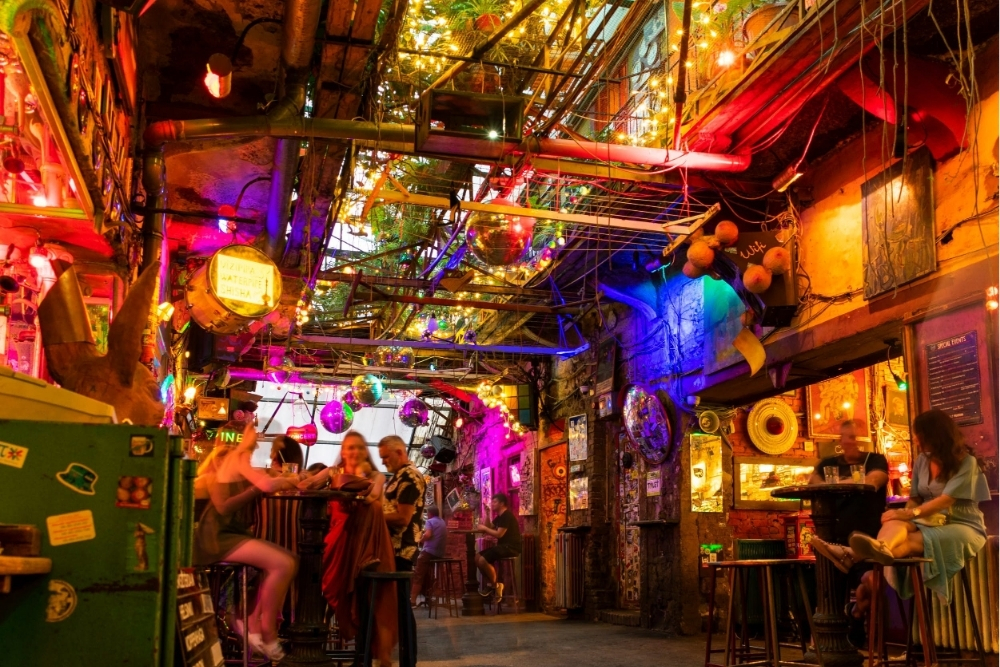
As you continue your exploration of Budapest’s Jewish Quarter, prepare yourself for a unique and unforgettable experience in the city’s vibrant nightlife scene at the renowned ruin bars. These unconventional venues have transformed abandoned buildings and courtyards into thriving social hubs, creating a truly unique atmosphere.
The ruin bars are a testament to Budapest’s creativity and free-spirited nature, attracting locals and tourists alike. Step into these hidden gems and be immersed in a world of eclectic decor, retro furniture, and vibrant street art.
The atmosphere is electric, with live music, DJs, and a diverse crowd that knows how to have a good time. Whether you’re sipping a craft cocktail or enjoying a pint of local beer, the ruin bars offer a one-of-a-kind experience that perfectly captures the essence of Budapest’s nightlife.
These are 3 of the best ruin bars in the Jewish Quarter of Budapest:
Szimpla Kert: This bar is often regarded as the pioneer of the ruin bar movement in Budapest. Located in a sprawling old factory, Szimpla Kert is known for its quirky and mismatched décor, which includes everything from vintage cars to bathtubs filled with drinks. It’s more than just a bar; with live music, open-air cinema screenings, and a diverse crowd, it offers a unique experience. It even hosts a farmer’s market on Sundays.
Mazel Tov: This bar stands out with its Middle Eastern-inspired décor and culinary delights. Located in the Jewish Quarter, Mazel Tov features a stunning glass ceiling, hanging plants, and a menu filled with delicious Mediterranean and Israeli dishes. It’s an ideal spot for enjoying a cocktail in a relaxed atmosphere with live music.
Instant & Fogas Ház: This establishment is more of a massive entertainment complex than a typical ruin bar. Housed in a skeletal 1861 building, it features more than a dozen bar counters and several dance floors, making it perfect for those in the mood for dancing. The venue is known for attracting a tourist-heavy crowd and offering a variety of music and atmospheres.
Historical Landmarks: Tracing the Jewish Heritage
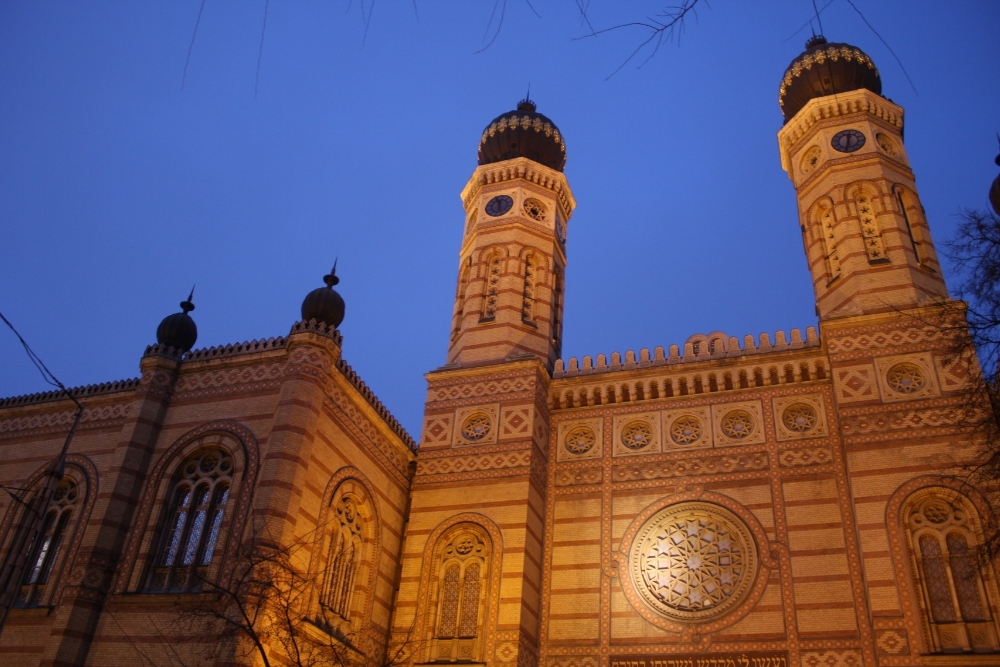
Tracing the heritage of the Jewish community in Budapest is an immersive experience that allows you to delve into the traditions and stories that have shaped this vibrant neighborhood.
Start your journey at the Dohány Street Synagogue, the largest synagogue in Europe, and explore its stunning architecture and poignant Holocaust Memorial. Next, visit the Jewish Museum, where you can delve into the history of Hungarian Jewry through its extensive collection of artifacts and documents.
Don’t miss the Tree of Life Holocaust Memorial in the courtyard, a powerful symbol of hope and resilience. As you wander through the streets, you’ll also encounter various other historical landmarks, such as the Rumbach Street Synagogue and the Kazinczy Street Orthodox Synagogue. Each of these landmarks tells a unique story, allowing you to truly immerse yourself in the rich Jewish heritage of Budapest.
Cultural Events: Immerse Yourself in the Vibrant Community
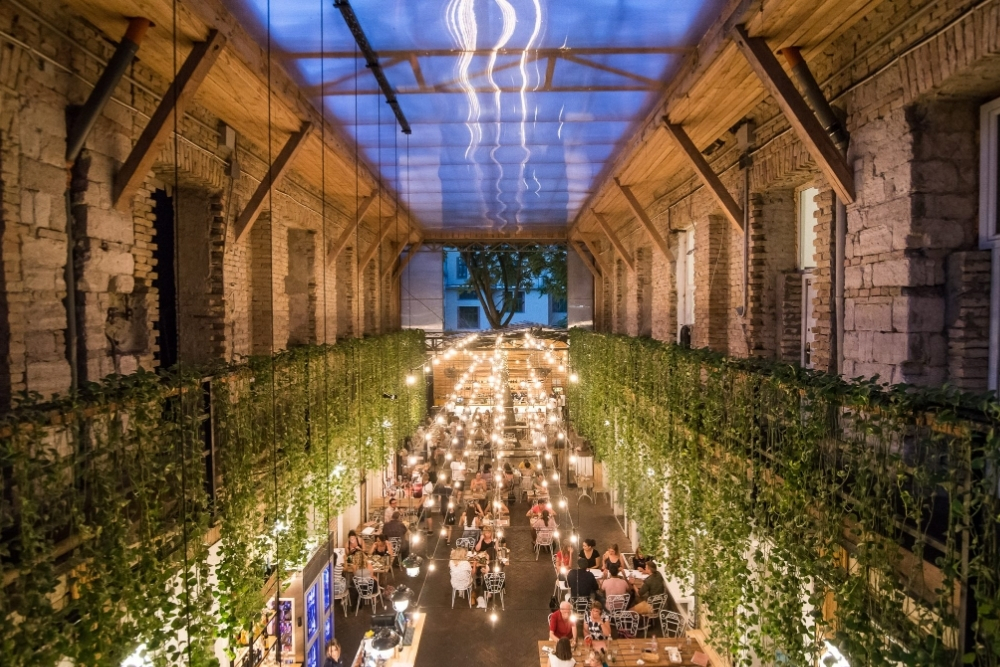
Experience the vibrant community of Budapest’s Jewish Quarter through many cultural events that showcase the neighborhood’s rich traditions and artistic expressions.
From lively food festivals to electrifying live music performances, something is always happening in this lively corner of the city. Indulge your senses in the tantalizing aromas of traditional Jewish cuisine at the annual food festivals, where you can sample various mouthwatering dishes like matzo ball soup, gefilte fish, and rugelach.
Enter in the soul-stirring melodies of live performances ranging from traditional klezmer tunes to contemporary jazz and world music. The Jewish Quarter comes alive with its residents’ vibrant energy and creativity, providing an immersive cultural experience that is sure to leave you captivated and enriched.
Get ready to be swept away by the lively atmosphere and immerse yourself in the vibrant community of Budapest’s Jewish Quarter.
Conclusion On A Visit In Budapest’s Jewish Quarter
As you bid farewell to Budapest‘s Jewish Quarter, you’ll carry with you more than just memories. Like a vibrant tapestry woven with threads of history and culture, this unique district offers a journey that transcends time.
From the synagogues that whisper tales of the past to the vivid street art that bursts with creativity, every corner holds a story waiting to be discovered.

